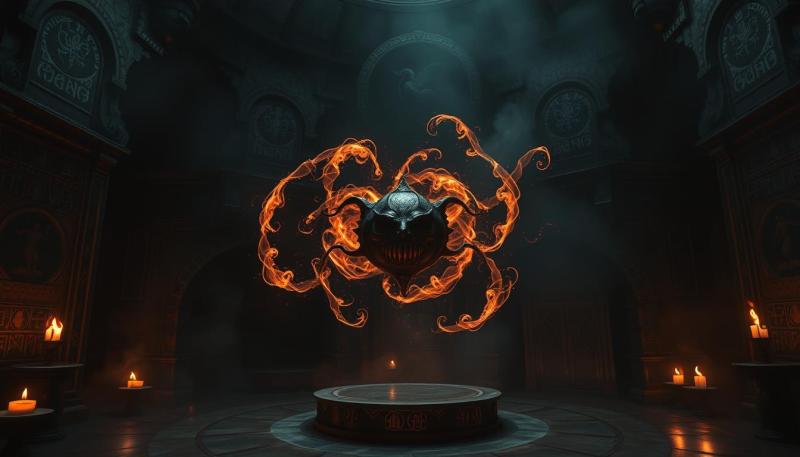The Golden Snitch is a tiny, winged ball that plays a crucial role in the magical sport of Quidditch. This walnut-sized golden sphere zips around the Quidditch field at high speeds, making it incredibly hard to catch. In a Quidditch match, the team whose Seeker catches the Golden Snitch earns 150 points and ends the game.
The Snitch has a rich history in the wizarding world. It evolved from a small bird called the Golden Snidget, which was originally used in early Quidditch games. Over time, the live bird was replaced with the enchanted golden ball we know today. This change was made to protect the endangered Snidget species and improve the game.
In the Harry Potter series, the Golden Snitch takes on special meaning beyond its role in Quidditch. It becomes a symbol of Harry's journey and plays a part in some key moments of the story. The Snitch's ability to remember the touch of the first person who handled it becomes important in the final book.
Key Takeaways
- The Golden Snitch is worth 150 points and ends the Quidditch match when caught
- It evolved from a live bird to an enchanted golden ball to improve the game
- The Snitch has special significance in Harry Potter's personal journey
Origins and History of the Golden Snitch
The Golden Snitch has a fascinating history rooted in the magical world of Quidditch. Its creation was sparked by concerns over an endangered magical bird and shaped by key historical figures.
Evolution from Golden Snidget to Snitch
The Golden Snitch evolved from a small bird called the Golden Snidget. In early Quidditch games, players chased this tiny, fast-flying creature. The Snidget's round body and quick movements made it hard to catch.
As Snidget populations declined due to Quidditch, wizards needed an alternative. Bowman Wright, a skilled metalworker from Godric's Hollow, invented the Golden Snitch. This magical ball mimicked the Snidget's size, color, and flight patterns.
Wright's invention preserved the excitement of Snidget-catching while protecting the endangered species. The Snitch became the third ball in Quidditch, alongside the Quaffle and Bludgers.
Influence of Barberus Bragge and Modesty Rabnott
Barberus Bragge, Chief of the Wizards' Council, played a crucial role in Snidget-hunting. During a Quidditch match in 1269, he released a Snidget and offered a reward for its capture. This act popularized Snidget-catching in the game.
Modesty Rabnott, a witch attending the match, opposed Bragge's actions. She summoned the Snidget to save it, highlighting the need for bird protection. Her actions led to fines for killing Snidgets and eventually their replacement with the Golden Snitch.
These events shaped Quidditch rules and sparked the invention of the Golden Snitch. The sport evolved to balance excitement and ethical concerns, preserving its thrilling nature while safeguarding magical creatures.
Role in Quidditch
The Golden Snitch plays a crucial part in Quidditch matches. It's a small, fast-flying ball that decides the game's outcome. Catching it requires great skill and often determines which team wins.
Gameplay and Rules
In Quidditch, the Golden Snitch is worth 150 points. When a Seeker catches it, their team usually wins the match. The Snitch is walnut-sized and gold-colored with silver wings. It flies around the pitch at high speeds, making it hard to spot and catch.
The game doesn't end until someone catches the Snitch. This means Quidditch matches can last a long time. While Chasers score with the Quaffle and Beaters hit Bludgers, Seekers focus solely on finding the Snitch.
Position of the Seeker
Seekers have one job: catch the Golden Snitch. They don't handle the Quaffle or Bludgers. Seekers need to be quick, agile, and have sharp eyes. They fly around the pitch looking for the tiny Snitch while dodging other players and balls.
Famous Seekers include Harry Potter for Gryffindor and Viktor Krum for the Bulgarian national team. Seekers often become the stars of their teams. Their performance can make or break a match, regardless of the other players' efforts.
Noble Collection Harry Potter Fawkes Plush Toy
Cuddle up with Fawkes, the beloved phoenix, and bring a touch of magic to your collection!
Product information
R$188.34
Product Review Score
4.85 out of 5 stars
15 reviewsProduct links
Famous Quidditch Matches
Some Quidditch matches are remembered for their Snitch catches. In Harry's first year at Hogwarts, he nearly swallowed the Snitch during a match against Slytherin. This unusual catch gave Gryffindor the win.
Another notable match was the 1994 Quidditch World Cup final. Here, Viktor Krum caught the Snitch for Bulgaria. But Ireland still won because they had scored more points with the Quaffle. This shows that catching the Snitch doesn't always guarantee victory.
At Hogwarts, house rivalries often play out in Quidditch matches. Gryffindor versus Slytherin games are especially intense, with Seekers racing to grab the Snitch and secure house pride.
Significance in Harry Potter's Journey
The Golden Snitch plays a key role in Harry Potter's story. It shapes his identity as a Seeker and holds hidden meanings that become clear as his journey unfolds.
Harry as a Seeker
You'll see Harry's natural talent as a Seeker from his first year at Hogwarts. In "Harry Potter and the Sorcerer's Stone," he catches the Snitch in an unusual way - with his mouth. This moment shows his instincts and bravery.
As a Seeker, Harry learns important skills. He develops sharp focus, quick reflexes, and the ability to spot small details. These skills help him both on and off the Quidditch field.
The Golden Snitch represents perseverance and determination for Harry. Chasing it teaches him to keep trying, even when things seem impossible. This mindset helps him face the challenges ahead in his fight against Voldemort.

Resurrection Stone Connection
In "Harry Potter and the Deathly Hallows," you learn that the Snitch has a secret. Dumbledore hides the Resurrection Stone inside it. This connection links the Snitch to deeper themes of life, death, and sacrifice.
The Snitch's "flesh memory" becomes important here. It only opens for Harry when he's ready to face death. The words "I open at the close" appear on its surface, hinting at its true purpose.
This Snitch teaches Harry about the power of choice. He must decide whether to use the stone or accept his fate. It's a test of his character and understanding of life and death.
The Final Snitch Catch
The last time Harry catches the Snitch is very different from the first. It's not about winning a game, but about facing his destiny. When Harry realizes he must sacrifice himself, the Snitch opens.
Inside, he finds the Resurrection Stone. This lets him see his loved ones one last time before he faces Voldemort. It gives him courage and comfort in a scary moment.
This final "catch" shows how much Harry has grown. He's no longer just a talented Seeker, but someone who understands the bigger picture. The Snitch, once just a game piece, becomes a symbol of Harry's journey and the choices he makes.








